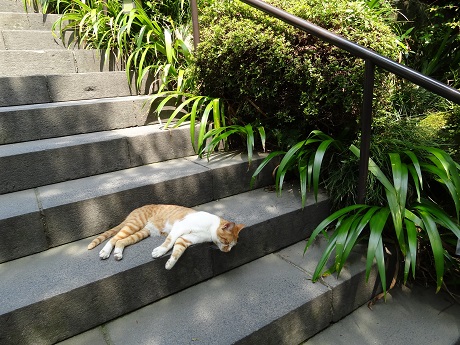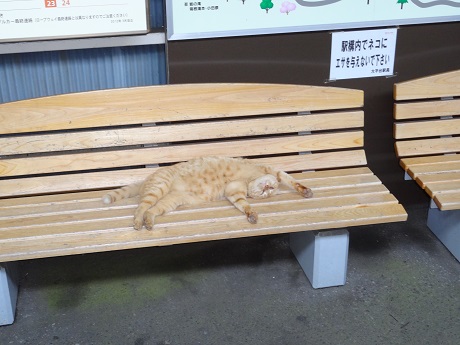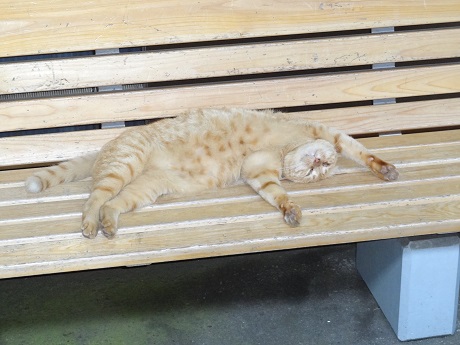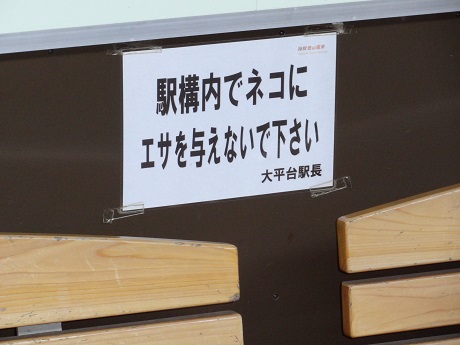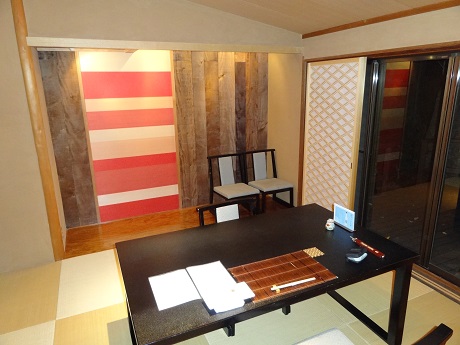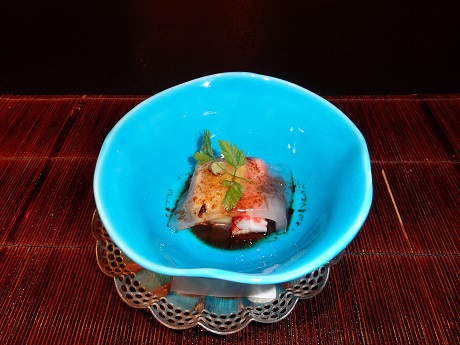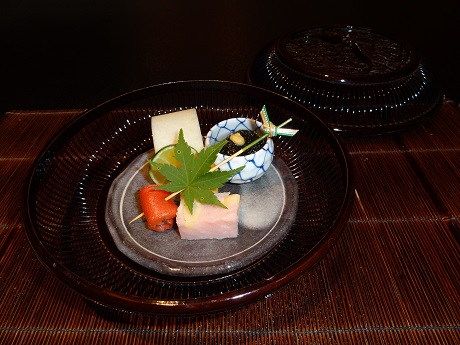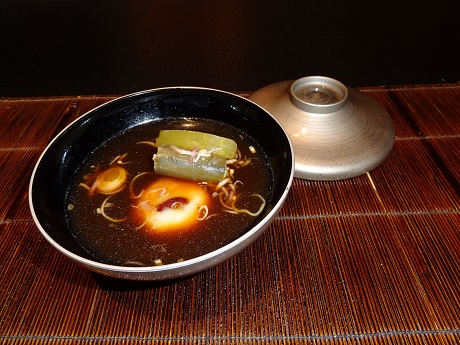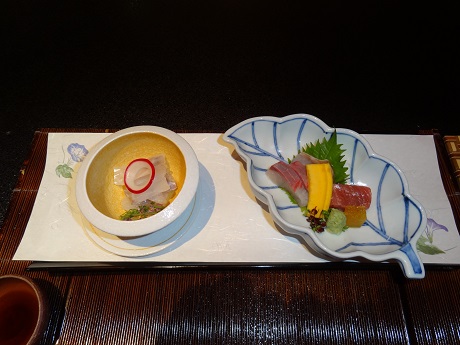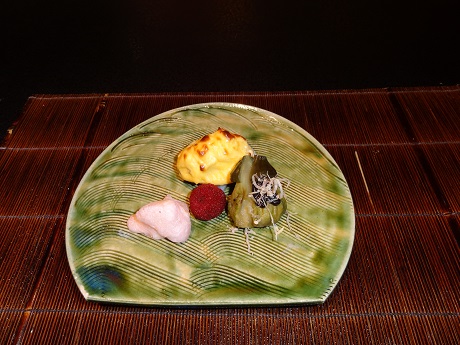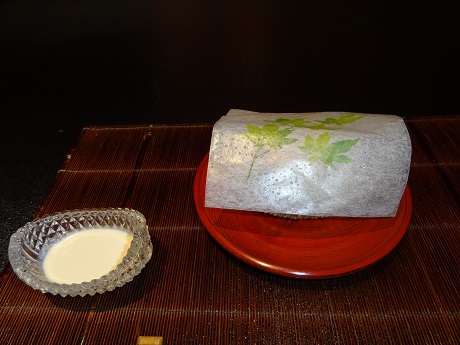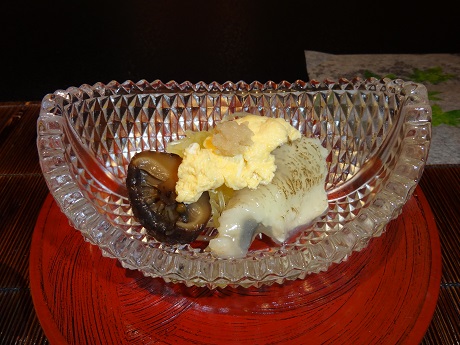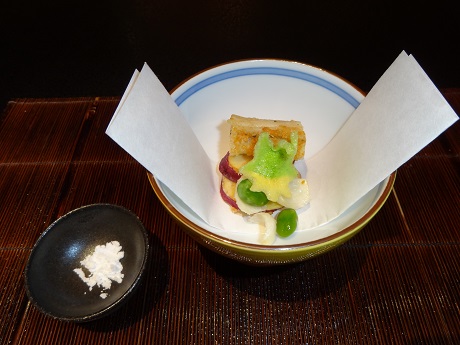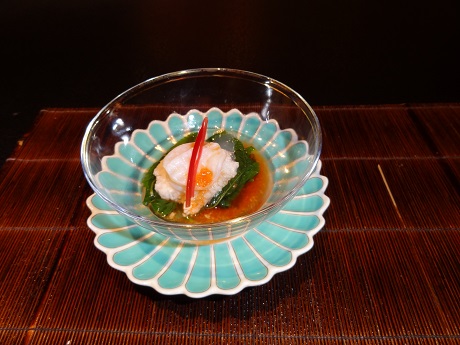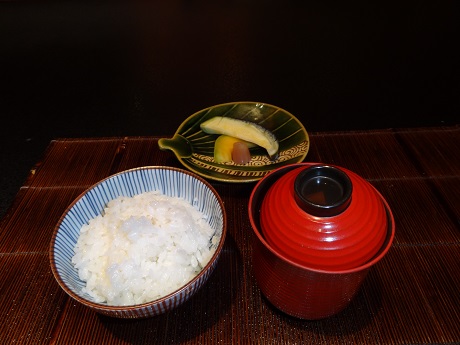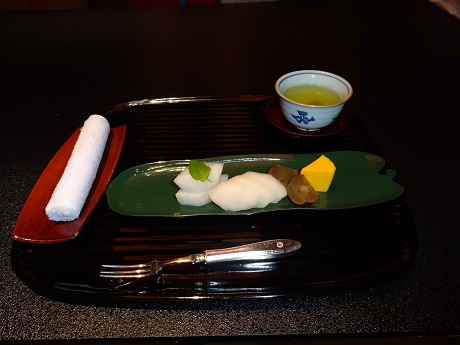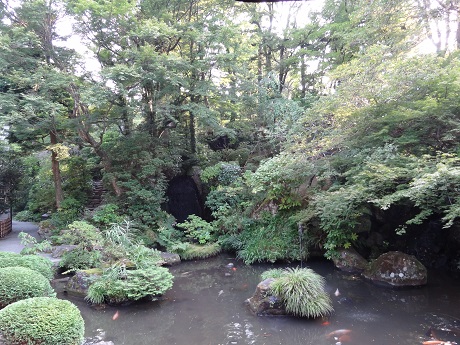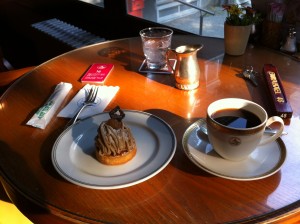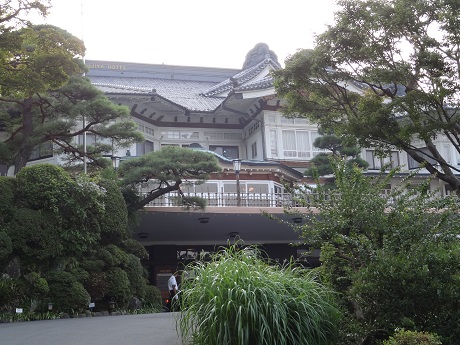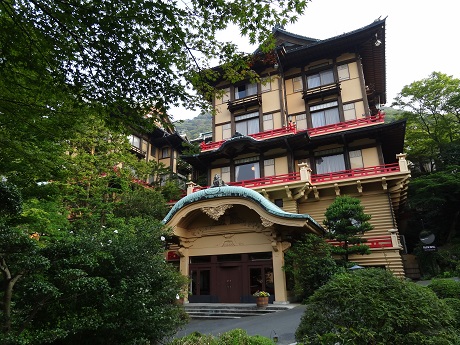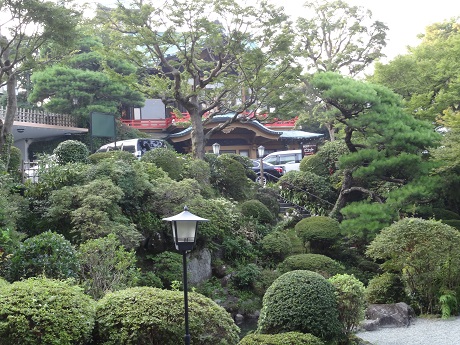The Kabuki
1August 20, 2013 by IPAlchemist
The highlight of my visit to Japan was a trip to the newly rebuilt Kabuki-za in Ginza, where I was kindly taken by my former Japanese teacher Emiko.
I have no pictures, so I am going to have to use words to paint the scene. Bear with me, dear readers.
The Kabuki-za puts on three performances a day, and each performance consists of two plays separated by an interval. Emiko had recommended that we go and see the first performance of the day, which featured two very different pieces – Nozaki-mura (Nozaki Village) and Shunkyo Kagami Jishi (Young Yayoi and the Spirit of the Lion). The style of the two plays is completely different, making the experience a wonderful introduction to Kabuki. I have never before seen Kabuki in Japan, although I did go twice to see Ebizo Ichikawa XI perform at Sadler’s Wells a few years ago (featuring a performance of Fujimusume – “Wisteria maiden”, and another play Kasane). But neither piece at the Kabuki-za was at all like anything that I saw then – there being many strands of the Kabuki tradition and the experience of each one being (to me at least) quite distinct.
Emiko had been keen that I see the famous Kabuki actor Kankuro Nakamura perform the lion dance in the second piece. His brother Shichinosuke would take over the part from the day after we went. But the same Shichinosuke performed one of the main onagata (man playing female) roles in the first piece.
Do follow the above links for synopses of the two plays – I won’t repeat here. Suffice to say for present purposes that Nozaki-mura originated as a bunraku (puppet theatre) performance and therefore is accompanied by the same shamisen and chanting performers as bunraku is. It features a love triangle with a (to my mind rather pathetic and selfish) man (called Hisamatsu) being engaged to a girl (Omitsu) to whose family he is indebted, while being in love with his boss’s daughter (Osome, who turns out to be pregnant with his child).
I was utterly transfixed by both Osome and Omitsu for completely different reasons. Osome (played by Shichinosuke) was absolutely stunning – when she appeared on the hanamichi wearing a gorgeous purple kimono, the whole audience literally gasped. Omitsu is portrayed as plainer, as the plot requires, but I was captivated by her deft and agile movements, for example as she practised applying makeup, and as she chopped a daikon. She was so expressive as well, in particular as she showed her displeasure at the unwelcome arrival of her love rival.
I was also very struck by the fact that the most bawdy comic part of the piece, namely the banter between two palanquin bearers, occurs precisely at the most emotion-laden scene, and not separated from it. I think Shakespearean tragedy employs similar juxtaposition of the tragic and the comic for heightened effect of the emotional intensity.
There is a lot less going on in the second piece in terms of plot, and really the play seems to be about the presentation of some set piece dances. The musical style is completely different and is called “nagauta“, featuring a large musical ensemble of shamisens, drums, flutes, and chanters, all in stiff formal dress. A dancing maiden becomes possessed by the spirit of a lion god, and so reappears in a fantastical outfit with a mane-like hair which at the back is almost full-body length. The movements of the lion contrast sharply with two butterfly dancers (played by two young men) who generally flap about while the lion is doing his thing. I don’t think that you need to be any particular kabuki expert to really enjoy the beauty of this kind of performance.
Kabuki has a reputation of being inaccessible, but, particularly with the excellent English in-ear commentary, I did not find it at all hard to follow what was going on, and to feel an appreciation of the extraordinary talents and abilities of the performers, as well as a very human response to the characters in the first, more narrative, piece. I am sure that there will have been layers of subtlety that I missed, but I would really encourage anyone to go and experience this wonderful art form for themselves if they get a chance.
Emiko, who is an expert on Japanese Noh drama, informed me that the lion dance piece is also performed in the Noh tradition, but that “in Noh, we do it with masks”. I love “we do it with masks” as the distilled quintessence of the distinction between the earlier, more formal, Noh theatre, and the later Kabuki tradition. (For my feelings about Noh, which I also love, see my earlier post here.)
I shall definitely be looking out for the next opportunity to see any Kabuki drama, whether in Europe or in Japan.
Category Leisure, Music, Travel | Tags: kabuki, Kagami Jishi, Kankuro Nakamura, Nozakimura, Shichinosuke Nakamura
The cats of Hakone
1August 17, 2013 by IPAlchemist
This is a little post for my sister Kerry.
There were some adorable cats in Hakone, and I managed a couple of pictures which I would like to share.
The first cat seemed to live in the Fujiya hotel. It was very tame and seemed to like being stroked (or perhaps it was too hot for it to run away). I took some pictures of the hotel on the last day, and it was lying on the steps leading up to the hotel.
Fujiya hotel cat
The next cat was at Ohiradai station on the Hakone Tozan Railway, that I saw on the way back to Tokyo after the end of my stay in Hakone. What was particularly adorable, besides the wonderfully stretched out pose (like the Fujiya cat, this one didn’t look like it moved much) was the fact that it was directly underneath a sign that said to please not feed the station cat. I present for you enjoyment the panoramic view and close-ups of the moggy itself and the sign in question.
Category Leisure, Travel | Tags: cat, Fujiya Hotel, Hakone, Hakone Tozan Railway, Ohiradai station
The Fujiya Hotel 3 – Kaiseki Dinner at Kikka-so
1August 9, 2013 by IPAlchemist
Even though the Fujiya is not, as I have said, Western, but rather Western-influenced Japanese, it seems it could not stay even that way for long, and so after WW II it annexed a Japanese-style lodging that became the Kikka-so Inn. Apparently the building was originally built as an Imperial villa in 1895 and was used by the Imperial royal family until it was purchased by the Fujiya. It must have been very odd in the first half of the 20th century having Japanese royalty staying just metres away from a busy resort hotel that was actively attracting customers from all over Japan and the world. So, having eaten my first night at the flagship restaurant of the hotel which served exquisite French food (of which alas no photos were taken), tonight it was off to the Kikka-so for a Japanese kaiseki dinner. Kaiseki is basically a tasting menu that is reminiscent of nouvelle cuisine because of the simple fact that it inspired it. It has very strict rules, however, and the courses follow a set and predictable order. The food is highly seasonal, and so if you have a kaiseki dinner at two completely different establishments on consecutive days, you will likely find remarkable similarities in what you receive. I am no expert, but I think that the basic order generally runs something like this (the terms are my own): Pre-appetiser Appetiser Soup (usually clear) Sashimi Grilled dish Steamed dish Fried dish Vinegared dish Rice, miso soup, pickles Dessert (usually fruit and/or sorbet) But look it up on ‘tinternet if you want to know more. (By the way I am not talking about the “kaiseki” which has something to do with the kanji for “stone” and is related to the tea ceremony – as my Japanese teacher always used to say – “different kanji”). I have never before photographed an entire kaiseki meal, but this seemed the perfect chance as I was by myself. Also, somewhat unexpectedly, I was in a private room “Sazanka” which was delightful. So here is the story in pictures and brief explanation.
The room “Sazanka” in the Kikka-so Inn
Pre-appetiser
The pre-appetiser contained crab, corn tofu and a small slice of corn, aloe (which I think is the gelatinous material on the top) and balsamic vinegar.
Appetiser
The appetiser is a plateful of little mouthfuls of gorgeousness. At the back, covered in a strip of apple, is a piece of sushi with (apparently) barracuda on the top. The maple leaf is just for decoration.
Soup
The soup is usually clear, but this one was not. In the middle is a ball of rice cake containing fish. There is a translucent green vegetable that I think is taro stem.
Sashimi is raw fish (sushi isn’t – it may include raw fish but it is the rice underneath that is characteristically sushi). Bottom left is the bowl of soya sauce for dipping. Tuna is almost always present, and you can see it there on the right. I think the one on the left is called suzuki but I am open to correction. And yes that is a slice of radish with the middle cut out that you can see on top. Sashimi is almost always served on top of thinly sliced daikon (giant radish) with a shiso leaf on top, which is edible and delicious. The green blob is wasabi – Japanese horseradish.
Grilled dish
At the top was a delicious confection of abalone, cheese and edamame (kind of bean) served in the abalone shell. I was assured that it contained “bonito guts” but this ingredient did not stand out. On the left the pink thing is lily bulb coated in plum paste, and the red thing in the middle is a pickled sour plum. On the right is aubergine with miso paste.
Steamed dish – covered
Steamed dish – uncovered
This steamed dish was a cold one. It looked so lovely with the pretty paper cover that I photographed it like that, and then close-up with the cover off. The fish is called “hamo”, which I think is a kind of eel, and that is a shiitake that you can see. The sauce was delicious and contained sesame and other yummies.
Fried dish
The fried dish was a delight. The beans are apparently not edamame but gindan – ginkgo nuts. The thing on the top, surprisingly, was a kind of rice cracker. At the back was a piece of eel, and underneath are two slices of sweet potato, stuffed with some kind of minced prawn, and then fried.
Vinegared dish
This was not a triumph. On the top you can see a scallop which was quite nice, and there was a chilli sauce which was interesting, but the whole thing sat in a slimy sauce and the translucent gelatinous thing you can see is konyaku, which is really best left uneaten.
Nearly the end
You know you are nearly at the end of a Japanese meal when they serve the rice, miso soup and pickles. This time the miso soup was replaced by a clear soup, unusually, but you can’t see that because I took the photograph with the lid on. Today’s pickles featured ginger, aubergine, and melon. No, really.
Dessert
And then the dessert tray. Fruit, green tea, and a lovely ice-cold towel. (Did I say I have been sweltering all day? NEVER come to Japan in the summer.)
So that, folks, is a kaiseki meal. Gochisou-sama deshita.
Category Leisure, Travel | Tags: dinner, Fujiya Hotel, kaiseki, Kikka-so
The Fujiya Hotel 2 – Tea on the Verandah
1August 9, 2013 by IPAlchemist
The place to have tea at the Fujiya is called the Orchid Lounge, but this name gives completely the wrong impression. It is in fact a verandah running along the back of the hotel, glassed in, with a single row of tables set diagonally against the windows. There is a short return with only two small round tables, and coincidentally that is where I sat both the first time I came with Keizo, and today.
There is a beautiful view of a small Japanese garden – pond, koi carp (you can see them in the photo), the lot, that is simply exquisite. I have tried to photograph it but fear that two dimensions really does not do it justice.
Above the main tables, and visible from my seat, is the back of the hotel, including a view of the window of my room. Mine is first floor (UK counting – Japanese “ni-kai”), slightly right of the centre of the picture, the window before the double doors. The green pipe that you see to the right of the double doors, incidentally, is an ancient firefighting system and inside there is a roll of flexible hose that can be connected to the end of the pipe.
View of rear of main building – including my room!
The menu reflects typically those things that Japanese coffee shops offer, entirely different from what you would find in any other country. Not a scone in sight – instead specials were French toast (no it wasn’t breakfast time), cinnamon toast (honestly, it really wasn’t breakfast time), and slushies – ice with flavoured syrup poured over. I plumped for a cake known as as Mont Blanc – I have never seen them outside Japan but here they are everywhere. In the less attractive form that I first came across the animal it featured only cream and marron glace paste (a smooth sweet paste made from sweet chestnuts), but he Fujiya version was a triumph – a sponge base, and identifiable bits of real (and less sweet) chestnut made it simply magnificent.
There was then just a short time to rest until dinner, which was quite a different affair.
Category Leisure, Travel | Tags: afternoon tea, Fujiya Hotel, Mont Blanc, Orchid Lounge
The Fujiya Hotel Part 1
0August 9, 2013 by IPAlchemist
How shall I write the praises of the Fujiya Hotel? I was completely captivated by it the first time I came across it, a few years ago when my friend Keizo was showing me around Hakone.
You need I think to consider a little the history. The founder Sennosuke Yamaguchi travelled to the USA and Europe and learned something of the Western hotelier tradition in the early Meiji period, and founded his hotel in 1878. It was apparently the first western-style hotel in Japan (if this is not strictly true it must have been one of the first), in the resort area of Hakone, popular even then. The original building burned down in the Miyanoshita fire in 1883, so the current main building dates from 1891. War, earthquake and fire means that even in a country so historic as Japan, Meiji period buildings are something of a rarity, so it is for me an enormous joy to be staying in an original Meiji building.
When we say “Western-style” we mean “Japanese interpretation of Western style” – it does not look anything like anything one might find in the actual West. The original building and most of the later additions are actually very Japanese in character, although with clear western influences. The result for me seems like a Japanese re-interpretation of a Swiss chalet.
Buildings were added in the late Meiji and Taisho periods (early 20th century), the former just after Japan’s success in the Russo-Japanese war, but I am most drawn by the two phases of later additions – one in the early Showa period, when Japan was expanding its empire in east Asia, and the second in the 1960s, when Japan was rebuilding itself. Through all these turbulent times, the Fujiya was trying to bring rest and relaxation to those in need. There is a museum in the basement chronicling some of the history, including a visit from the Showa Emperor himself in the 1960s. What it must have been like to be visited by a being sometime considered to be divine.
Although setting out to be a Western style hotel, the Fujiya is in fact based around that most Japanese of leisure attractions – the onsen or hot spring. That is what Hakone is famous for, and that is what you get at the Fujiya. There is a small public bath (separated by gender), a large onsen swimming pool that is mixed, and for which bathing costumes are required, but then the crowning glory is onsen water piped into the bath in your own room’s bathroom, through what appears to be genuine Meiji era plumbing. Guests are advised that the hot water can take up to 10 minutes to arrive. I think it actually takes longer.
The buildings are caked in layers of paint; modern additions such as electricity, air conditioning and internet are delivered in conduits attached to the original structure; and yet… And yet… The historic charm of years of people staying and relaxing here oozes enticingly out of every beam, windowframe, and wooden floortile.
The service, while certainly better than anything in hotels in London, does not quite achieve the effortlessly inconspicuous ideal of the Okura, but you have to pity staff who must deal, displaying Japanese politeness, with not only huge parties of staying guests, but also streams of tourists who come, alone or in groups, like Keizo and I did those years ago, just to ogle and perhaps have tea.
The building itself is very hard to photograph, set as it is upon a hill, and obscured from most directions by trees, but I will have a go.
The Main Building 1891
The Flower Palace 1936
The Restaurant – added 1930
The feeling of having got away from it all is greatly increased by choosing the correct way to arrive. Short it is not – it took a full four hours from Narita airport. The route is this: limousine bus to Shinjuku Station bus station; Odakyu railway Romance Car to Hakone Yumoto, and then Tozan railway three stops to Miyanoshita. It is this last bit that makes it all worthwhile – the train ascends nearly 500m in altitude in a series of 3 switchbacks, at each one of which the two drivers swap ends, climbing though thick vegetation, featuring densely packed hydrangeas. It was glorious. Then you just have to heft your luggage downhill then uphill for about 500m and then you are there.
A rather less welcome reminder of having got away from it all is the discovery that the nearby ATM does not accept foreign issued credit cards, followed by being politely informed by the hotel staff that they do not advance cash on cards, that there is no suitable ATM nearby, and that the nearest one that can be used is at Miyanoshita Post Office, not walkable, requiring a train, bus or taxi journey. Oh and the machine only functions until 6pm.
The odd thing is that despite the remote feeling, it is actually not remote at all by any objective standard. It is on the route of the old Tokaido road – the main route from Tokyo to Kyoto, and the current Japanese Route 1. So it is actually about as well connected as it is possible to be and still be apparently in the middle of nowhere. The road, despite its impressive moniker, is at this stretch only single carriageway and very twisty.
The main business of the day, however, was to have another tea like the one that had first enchanted me so much. So that is the subject of my next post.
Category Leisure, Travel | Tags: Fujiya Hotel, Hakone, Japan, Miyanoshita, tozan railway
Faces of Chemistry
1August 2, 2013 by IPAlchemist
Well would you credit it? Your very own IPAlchemist is now A Face of Chemistry! Those who said I had to choose – I could be a lawyer or a chemist but not both – well they were wrong.
Before I go on to explain what on earth I am talking about, I have to give the now-usual obligatory apology. It has been MONTHS since I posted here. It is not that nothing has been happening – far from it – but that what blogging time I have has been exclusively reserved for the IPKat (check out the Publications page for a periodically updated list of IPKat posts) with the only occasional foray as a guest blogger on the India-specialist Spicy IP blog. There have been some other writings as well, but for those too you have to peek at the Publications page as well.
Anyway, a little while ago those lovely people at the Royal Society of Chemistry (and I mean it – they really are lovely) asked if I would mind being filmed for the Faces of Chemistry series. You can check the RSC’s explanation of the series on the Faces of Chemistry microsite, but my understanding is that they are aimed at young adults, and that the intention is to encourage people to study chemistry to show what an amazing range of career opportunities it leads to. Well that is very much my bag, and I will do anything I can to further and improve the public image of chemistry, so of course I said yes.
We burbled around for a little while making all the arrangements, and then on the appointed day two wonderful people came from the RSC with a cameraman who brought with him all that impressive looking kit. The way they structured it was that the nice lady asked me lots of open questions, and then I was supposed to reply in such a way that when they edited out the questions, the answers by themselves would make sense. Well I soon got the hang of it and we were away. And then before I knew it they said they had enough material and that was it.
We had agreed that they would also film around the office, with me lecturing, working, discussing cases, and so on, and that they would also interview two other chemists in the firm – Fergus Tyrrell who is my trainee, and Robert Lundie-Smith who is an IP solicitor. This would give different perspectives on the topic.
It turned out that they had so much material that they made two films – one of me, and one of Fergus and Robert. So a little while later two draft edits appeared in my inbox.
Well, dear readers, I can tell you that although I can handle speaking in public and even being filmed, watching it back is quite another thing altogether. All three of us found it excruciating watching ourselves, and my toes curled with embarrassment. Why do I go “Ummm” so much? Why do I look shiftily to one side when I am thinking? Why did no-one tell me? And do I really sound like that? Not to mention look like that? Apparently I do. So I have watched the proofs twice for quality control purposes (in fact they were perfectly edited and I didn’t request any changes, and neither did my colleagues), and then never again. Well, maybe one day I will bear to look once more.
Anyway you can go and watch them yourself on You Tube – Me and Robert and Fergus. I will be very happy if you “like” it.
Or if you prefer it embedded in the RSC website, see here for the series, and the individual resources of me and Robert/Fergus.
The IPAlchemist would like to thank the RSC for a great opportunity. It has been a joy and a privilege to be associated with this project.
Category Chemistry, News, Patents | Tags: Careers, Faces of Chemistry, RSC, Video
Stop Horsing Around With Our Food – RSC Public Lecture
0April 18, 2013 by IPAlchemist
On 14th March 2013 the IP Alchemist attended a panel discussion hosted by the Royal Society of Chemistry, entitled “Stop Horsing Around with Our Food”; the goal being to “tease out the issues to be tackled” in the wake of the recent horsemeat scandal and the progressively decreasing amounts of resources made available for food sampling and analysis.
The event took the form of a brief talk from each panellist followed by a question-and-answer session. The panel of industry experts consisted of:
– Dr Derek Craston, UK Government Chemist, Chief Scientific Officer at LGC and chair of the panel.
– Gerald Heddell, Director of Inspection, Enforcement and Standards Division at the Medicines and Healthcare products Regulatory Agency (MHRA).
– Dr Mark Woolfe, member of the RSC’s Analytical Methods Committee and formerly of the Food Standards Agency (FSA).
– Liz Moran, President of the Association of Public Analysts.
Dr Craston began proceedings by indicating that any food analysis or testing only usually takes place in relation to known issues, after a problem had been brought to light. Current resources are insufficient to test in areas where no issue has been identified.
Dr Woolfe stated that he was “not that surprised” that food adulteration had taken place and that he was only surprised by the scale of the issue. He said that the food chain had become longer, because price pressure from supermarkets led suppliers to source food production from abroad. He added that any supply chain should be as short as possible to avoid any untoward contamination.
Gerald Heddell looked at parallels with regulation of medical products. He stated that the answer cannot lie solely in testing but requires regulation of the supply chain: a poorly-regulated supply chain could not be compensated for by any amount of testing or analysis. He reported that 60% of adults have changed their shopping habits in the wake of the scandal, indicative of a collapse of confidence in the sector as a whole.
Liz Moran, of the Association of Public Analysts, painted a rather bleak picture of the decline of the UK food analysis system which is currently “in the eye of the storm” with 30% of the UK’s food testing laboratories having closed over the last few years resulting in a significant loss of expertise. She went on to argue that labs need to be able to react quickly to problems that present themselves and help the FSA. This issue was not routinely tested for before, but now labs were working round the clock testing beef for equine and porcine DNA. She stated that laboratories must be prepared for the next issue that presents itself and that regulation via paperwork would be insufficient due to possibility of forgery.
The floor was then opened to questions and contributions. Dr Chris Smart of Leatherhead Foods defended the industry and argued that food safety and traceability were taken very seriously. He pointed out that when fraud happens (of which there have been a number – orange juice, baby formula, olive oil) it can be hard to spot when it first happens, emphasising the importance of the integrity of the chain. When a question was raised regarding the acceptability of hiding cheap ingredients in processed food, he pointed out that one cannot simply “hide” ingredients and that doing so was illegal. He argued that there was nothing wrong with convenience food and that such products addressed a consumer demand. He pointed out that consumers have an expectation that products have good shelf life, but taking out emulsifiers, salt, and other ingredients can compromise this.
On the question as to whether cheaper and faster testing was being developed, Dr Woolfe outlined the immense number of issues surrounding food analysis, indicating for example that the presence of methanol in drinks is easy enough to detect whereas determining the geographic origin of meat is far more challenging.
One enquiry which aroused much interest from the panel was the question of how sensitive and specific the tests for horse meat were. Liz Moran immediately indicated that the last thing any lab would want to do is report a false positive result, and indeed that no lab would declare anything without undertaking repeat measurements. She went on to indicate that ELISA (Enzyme-Linked Immuno Sorbent Assay) tests are sensitive to 1% and PCR (Polymerase Chain Reaction) testing is sensitive to just 0.01 %, posing a further question as to what exactly constitutes an acceptable limit, pointing out that detection of equine DNA is not the same thing as establishing that the meat is horse meat as such.
Mark Woolfe pointed out that surveys and investigation come from intelligence – often from within the food industry itself, while Gerald Heddell re-iterated that testing cannot rule out all risk and that supply chain management is also key.
Ms Moran understandably criticised cuts to testing labs. When questioned, she explained that there have been cuts to DEFRA (Department for Environment, Food and Rural Affairs) but that local authorities also have responsibility for testing. The number of samples taken by local authorities has been declining in recent years and some have reported no testing at all to the FSA. Naturally these cuts were implicated in the fact that the horsemeat problem did not first come to light in the UK.
The IP Alchemist very much enjoyed this evening and thanks the RSC for putting it on in a very short timescale. He did however feel that each of the speakers pretty much said what you might have them to say, given their current or previous affiliation, and pretty much the same went for the audience contributions (where their loyalties were stated). Cuts were blamed where expected, and the importance of consumer choice and demand were also emphasised by precisely those who would be expected as well.
The IP Alchemist would like to thank his Twitter interlocutors, in particular @RSC_Comms, @chemical_ian, @melancholysci, and @chiara_ceci for enlivening the evening, and for creating a record on which this blog post could be based. The hashtag used for the event was #stophorsingaround. He is also enormously thankful to Fergus Tyrrell for assisting with the first draft of this report.
The event was webcast live, and there is a promise that the recording will be made available, but as at the posting time this has not yet occurred.
Category Chemistry, News, Science | Tags: Horsemeat Scandal, Public Lecture, RSC
Quasimodo – Favourite Rhyming Couplet
0April 7, 2013 by IPAlchemist
Last night I went to see a performance at the King’s Head Theatre of Quasimodo, a musical by Lionel Bart (of Oliver! fame), not quite finished and never performed before this run. As might be expected from the title, the story is based on Victor Hugo’s novel The Hunchback of Notre Dame. One is always nervous about revived or newly discovered pieces – there is often a reason for their neglect – but this was great. Fantastic hummable tunes and emotion-stirring harmonies. The musical was revived and directed by my friend Robert Chevara and had an amazing cast – every single one gave an astonishingly good performance, with first-class singing, acting, and movement. It is not on for much longer, so do get to see it if you can.
There was a lot for the lover of language as well.
First, the viewer is informed that Quasimodo is named for Quasimodo Sunday, otherwise known as Low Sunday, which, as luck would have it, is actually today. It is the Sunday after Easter and the name come from the introit for the day: Quasi modo geniti infantes “as newborn babes” (1 Pet. ii:2). According to the story, Quasimodo was found as an abandoned infant on that day, and thusly named.
The other thing is that the musical contains what could just possibly be my favourite rhyming couplet. Introducing Esmeralda to the bells of Notre Dame, Quasimodo sings the lines:
They cannot wait
To tintinnabulate
It is probably helped by the fact that the word was delivered perfectly , with a knowing pause to signify to the audience that the performer knew the absurdity of this character delivering such an improbable word – absolutely glorious. (Here I am getting annoyed that spellchecker does not like “tintinnabulate”.)
So dear readers, this got me thinking. An early blogpost of the IPAlchemist invited submission of favourite words. We haev probably gone as far as we can with that for the time being. Now my question is – what is your favourite rhyming couplet? From any work, including one that you made up yourself. In honour of Quasimodo I will invite responses during Eastertide. So I will do a roundup around Pentecost.
Submit by comment, Twitter or email. Over to you!
Category Language, Leisure, Music | Tags: Favourite word, musical, rhyming couplet
RSC Profile
3April 4, 2013 by IPAlchemist
Over the last year or so, I have been involved in a number of projects related to the public perception and understanding of chemistry, and also showing to current or aspiring chemists what possible careers are available for them, and what chemistry-related jobs might look like.
On Twitter, we have had #RealTimeChem (see @RealTimeChem, organised by @DrGalactic, whose blog is on my blogroll). The next event is going to be a week, not just a day, beginning on 22 April, so do all look out for that. I shall be at BIO in Chicago that week, so I am hoping to tweet and blog from there. It is my first time attending the BIO convention, so I am very excited about it.
The other week I was also thrilled to be added to @JessTheChemist ‘s family tree of tweeting chemists (where everyone is connected via a current or former supervisor). Her blog is on my blogroll, and the post with the family tree is here.
On the blogosphere, See Arr Oh hosted a Chem Coach Carnival on his blog Just Like Cooking, also on my Blogroll, last October, which I participated in here.
In a perhaps similar vein, the Royal Society of Chemistry has every month in RSC News, which accompanies Chemistry World, the magazine for RSC members, a profile of a chemist. And I am in the April edition, which you can find here (the profile is on page 7) or on the RSC Blog The Reaction here.
As it happens, there has been a bit of an intellectual property theme going on in the RSC News profiles recently, because just a few months ago the towering IP barrister Michael Edenborough QC was likewise featured – you can see his profile here. I actually only found out quite recently that his background was quite so strongly chemical – barristers practise in a wider range of technical and legal fields than patent attorneys so have a diverse array of backgrounds.
I hope that this little array may help any chemists out there who are considering what direction their career may next take.
Category Chemistry, IP (Intellectual Property) | Tags: Careers, Chem Coach Carnival, Chemistry, RealTimeChem, RSC
Factum est silentium…
0March 18, 2013 by IPAlchemist
…or The Sound of Silence
I have not explained, dear readers, why I have been out of commission for such a long time. I did not inform you, as I should have done, that I re-joined the IPKat weblog as a permanent member earlier in the year. So such blogging activity as I have undertaken has been there. I won’t post here when I post things to the IPKat, but I will from time to time update “Publications” with my IPKat pieces.
I do have a couple of non-IP related things to post about, so do not give up hope here. I shall still be blogging from time to time. I won’t spoil the surprise by saying what they are.
Category IP (Intellectual Property), News | Tags: Update
